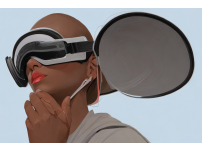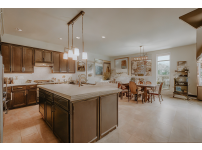건축산업에서 가상현실(VR)의 역할: 건축설계 및 계획강화(The Role of Virtual Reality in the Ar…
본문
가상 현실(VR)은 건축 업계의 운영 방식을 변화시켜 건축가들에게 새로운 수준의 설계 자유와 유연성을 제공하고 있습니다. VR을 사용하여 건축가는 건물의 가상 표현을 생성하여 디자인을 시각화하고 실시간으로 변경할 수 있습니다. 이를 통해 시간과 비용을 절약할 수 있을 뿐만 아니라 고객에게 보다 정확한 설계와 시각화를 제공할 수 있습니다.
건축 산업에서 VR이 사용되는 한 가지 예는 한국에서 건축가들이 VR 기술을 사용하여 복잡한 건물 구조를 계획하고 설계하는 것입니다. 예를 들어, 건축 회사인 해운대 건축은 서울에서 서울로 7017 프로젝트의 가상 표현을 만들기 위해 VR 기술을 사용했습니다. VR 모델은 건축가들이 디자인을 다양한 각도에서 보고 공간을 시각화하며 실시간으로 변경할 수 있도록 해 디자인 전반을 개선하고 시간과 자원을 절약할 수 있도록 도와줍니다.
설계 및 시각화 외에도, VR은 빌딩 시뮬레이션 및 테스트에도 사용될 수 있습니다. VR은 다양한 환경 조건을 시뮬레이션하고 지진이나 태풍과 같은 자연 재해에 견딜 수 있는 능력을 위해 건물 구조를 테스트하는 데 사용될 수 있습니다. 이를 통해 건축가들은 공사가 시작되기 전에 잠재적인 문제를 파악하고 설계를 변경할 수 있습니다.
또한 VR 기술은 완공 전에 건물의 가상 투어를 제공하는 등 최종 사용자의 건물 경험을 향상시키는 데도 사용될 수 있습니다. 이를 통해 잠재적인 세입자 또는 구매자는 건물의 레이아웃과 디자인을 포함하여 건물을 더 잘 이해하고 잠재적인 거주 공간이나 작업 공간에 대한 정보에 입각한 결정을 내릴 수 있습니다.
결론적으로, VR 기술은 건축가들에게 디자인과 시각화를 위한 새롭고 혁신적인 도구를 제공하면서 건축 산업을 변화시키고 있습니다. VR을 통해 건축가는 보다 정확하고 효과적인 설계를 만들고, 최종 사용자의 건물 환경을 개선하며, 프로젝트를 완료하는 데 필요한 시간과 리소스를 줄일 수 있습니다. VR 기술이 계속 발전함에 따라, 우리는 건축 업계에서 훨씬 더 많은 VR 응용 프로그램을 볼 수 있을 것으로 기대할 수 있으며, 건축가들이 건물 설계 및 계획에 접근하는 방식을 더욱 변화시킵니다.
위에서 언급한 이점 외에도, 건축의 VR은 또한 더 지속 가능하고 환경 친화적인 건물을 만들 수 있는 잠재력을 가지고 있습니다. VR을 사용하여 건축가는 에너지 소비에 미치는 다양한 조명 조건의 영향과 같은 다양한 시나리오를 시뮬레이션하여 에너지 효율 및 지속 가능성과 관련하여 건물에 가장 적합한 설계를 결정할 수 있습니다.
이것의 한 예는 한국에 본사를 둔 건축 회사인 Samoo인데, Samoo는 VR 기술을 사용하여 설계의 에너지 성능을 시뮬레이션하여 에너지 낭비를 최소화하고 건물의 전반적인 지속 가능성을 높이는 데 도움을 주었습니다. 이는 건물의 환경적 영향을 줄일 뿐만 아니라 건물 소유자의 비용 절감으로 이어집니다.
게다가, VR 기술은 또한 아키텍처의 접근성을 개선하는 데 사용될 수 있습니다. VR을 통해 건축가는 장애인이 접근할 수 있는 건물의 가상 표현을 만들어 건축이 시작되기 전에 건물의 접근성을 시각화하고 테스트할 수 있습니다. 이를 통해 건물이 포괄적이고 모든 사람이 접근할 수 있도록 하여 잠재적인 세입자 또는 구매자에게 더욱 매력적인 옵션이 될 수 있습니다.
결론적으로, VR 기술은 설계 및 시각화, 지속 가능성 및 접근성을 위한 강력한 도구를 건축가에게 제공함으로써 건축 산업에 혁명을 일으킬 수 있는 잠재력을 가지고 있습니다. VR 기술이 계속 발전함에 따라, 우리는 더 많은 건축가들이 그들의 디자인 과정에서 VR을 활용하여 모두를 위한 더 혁신적이고 지속 가능하며 접근 가능한 건물을 만들 것으로 기대할 수 있습니다.
요약하면, 건축 업계에서 가상 현실을 사용하면 설계 및 시각화, 지속 가능성, 접근성, 최종 사용자의 빌딩 환경 개선 등 다양한 이점을 얻을 수 있습니다. 건축에 VR 기술을 구현함으로써, 건축가들은 더 정확하고 효과적이며 환경 친화적인 건물을 만들 수 있으며, 산업을 더욱 발전시키고 모든 사람들을 위해 건설된 환경을 개선할 수 있습니다.
Virtual reality (VR) is changing the way the architecture industry operates, providing architects with a new level of design freedom and flexibility. With VR, architects can create virtual representations of buildings, allowing them to visualize designs and make changes in real-time. This not only saves time and money but also results in more accurate designs and better visualization for clients.
One example of VR being used in the architecture industry is in South Korea, where architects are using VR technology to plan and design complex building structures. For instance, the architecture firm Haeahn Architecture has utilized VR technology to create a virtual representation of the Seoullo 7017 project in Seoul. The VR model allows architects to view the design from various angles, visualize the space and make changes in real-time, helping to improve the overall design and save time and resources.
In addition to design and visualization, VR can also be used for building simulation and testing. VR can be used to simulate various environmental conditions and test building structures for their ability to withstand natural disasters, such as earthquakes or typhoons. This allows architects to identify potential problems and make changes to their designs before construction begins.
Moreover, VR technology can also be used to enhance the building experience for end-users, such as by providing virtual tours of the building prior to its completion. This allows potential tenants or buyers to get a better sense of the building, including its layout and design, and to make informed decisions about their potential living or working space.
In conclusion, VR technology is transforming the architecture industry, providing architects with new and innovative tools for design and visualization. With VR, architects can create more accurate and effective designs, improve the building experience for end-users, and reduce the time and resources required to complete a project. As VR technology continues to evolve, we can expect to see even more applications of VR in the architecture industry, further transforming the way architects approach building design and planning.
In addition to the benefits mentioned above, VR in architecture also has the potential to create more sustainable and environmentally friendly buildings. With VR, architects can simulate various scenarios, such as the impact of different light conditions on energy consumption, to determine the best design for a building with regard to energy efficiency and sustainability.
One example of this is the Korean-based architecture firm, Samoo, which has used VR technology to simulate the energy performance of its designs, helping to minimize energy waste and increase the overall sustainability of its buildings. This not only reduces the environmental impact of the building but also results in cost savings for the building owner.
Moreover, VR technology can also be used to improve accessibility in architecture. With VR, architects can create virtual representations of buildings that are accessible to individuals with disabilities, allowing them to visualize and test the accessibility of the building before construction begins. This helps to ensure that the building is inclusive and accessible to all, making it a more attractive option for potential tenants or buyers.
In conclusion, VR technology has the potential to revolutionize the architecture industry, providing architects with powerful tools for design and visualization, sustainability, and accessibility. As VR technology continues to advance, we can expect to see more architects utilizing VR in their design process, resulting in more innovative, sustainable, and accessible buildings for all.
In summary, the use of virtual reality in the architecture industry offers numerous benefits, including improved design and visualization, sustainability, accessibility, and building experience for end-users. With the implementation of VR technology in architecture, architects can create more accurate, effective, and environmentally friendly buildings, further advancing the industry and improving the built environment for everyone.














댓글목록 0